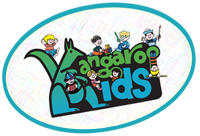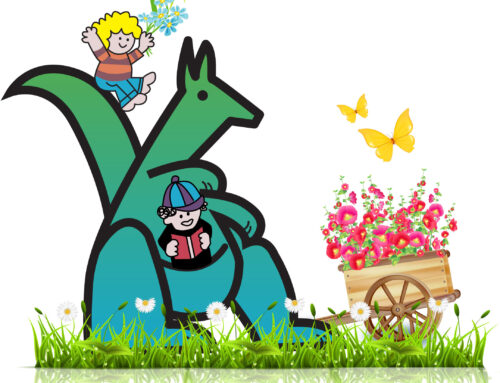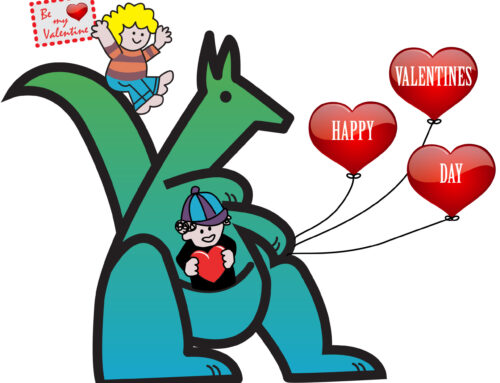Thanksgiving is a time to give thanks! Today there are many concerns about the ever growing sense of entitlement instead of the sense of community, and hard work ethic of past generations. So how can you begin to instill in your children as sense of caring and appreciation?
As always the best way to teach children is through role modeling. Is “thank you,” a regularly used phrase around your house? Do you as a parent show appreciation for a job well done? Bedtime is a great time to share stories about what you are thankful for and to ask children about things that occurred during the day that made them feel thankful. At Kangaroo Kids every family brings in a can or box of food to school before Thanksgiving that is donated to the local food bank. Even young children can learn to appreciate what they have and to help others that are less fortunate.
Here are some great ideas from Homa Tavangar, “10 Ways to Raise Grateful Kid.”
When my favorite uncle first met my daughter, then age three, he enthusiastically hugged her and gave her a toy he’d brought all the way from Uganda. My daughter wouldn’t even hold it, let alone say “Thank you.” I was mortified.
My daughter is now 17, and looking back, I realize that many factors could have contributed to her behavior: being unprepared for such exuberance, her natural shyness and biology. Kids under seven have difficulty understanding others’ feelings and being internally motivated to do the right thing. Nonetheless, parents can actively, gently instill a sense of gratitude.
The matter goes way beyond etiquette. According to research by the Greater Good Science Center at UC Berkeley, “people who practice gratitude feel considerably happier (25%) than those in a control group; they are more joyful, enthusiastic, interested, and determined.”
An attitude of gratitude helps us thrive. Try these steps to instill a mind-set of gratitude in your little ones.
1. Say “Thank you.” When “thank yous” are instilled in our vocabulary at home, a lifelong practice begins, even if it doesn’t stick at first. You can gently restate a sentence with polite language inserted, or suggest saying “Thank you” together.
2. Live it. Set an example and show appreciation by conveying you paid attention to real effort: “Your room looks so nice with the toys in their bins. I’m so happy that you remembered to put them away!”
3. Teach through role play. If your little one is too shy to say “thank you” in a social setting, they can pretend to teach their stuffed animals or dolls to do so, while you play along.
4. Create daily or weekly routines. A regular question, “What are you most thankful for today?” can serve as a comforting routine at bedtime or a highlight of a weekly dinner ritual.
5. Give concrete examples. At dinner, you can play the Rose and Thorn game, where the person whose turn it is to speak holds a rose and tells about one rose (a good thing) and one thorn (a challenging thing). A metaphor like the rose helps children develop gratitude even when things aren’t going their way. Keeping the rose in a vase all week serves as another reminder of coping with natural ups and downs. Books like The Giving Tree, Have You Filled a Bucket Today? and Mama Panya’s Pancakes offer simple, powerful metaphors of virtues.
6. Set expectations when shopping. Melanie Etemad of Bryn Mawr, PA shared a useful approach that her husband, a psychiatrist, came up with when their daughter Elyse was just two: “We’d say today is a ‘look’ day. Just like going to the museum, we enjoy the beautiful things, but we aren’t planning to buy anything. … We also tried to ensure that there were more ‘look’ days than ‘buy’ days, specifically to inoculate against the idea of always buying things, knowing that it breeds discontent. Now, at age six, Elyse knows that most of the time when we go out, we are not necessarily planning to buy anything and has the habit to ask if today is a ‘look’ day or a ‘buy’ day.”
7. Make giving and volunteering a habit. Set aside toys and clothing in good condition. Deliver the items to a deserving cause together. Talk about the process and why you care. Tap into organizations like Global Giving that offer a virtual marketplace for making a difference.
8. Create gratitude gift lists. Alongside a holiday or birthday gift wish list, for every item, family members can list something they are grateful for. These are the “priceless” gifts. By generating the list in a beautiful way, you demonstrate how valuable the alternate list is; it can be a keepsake for years to come.
9. Thank those who serve. Your example of acknowledging those who quietly make a difference in your life, from the bus driver to the person sweeping up the aftermath of a family lunch out, sends a powerful message to your children. Likewise, organizations like Operation Gratitude and Blue Star Families remember those serving in the military. Kathy Roth-Douquet, Founder and Chair of Blue Star Families, says, “In addition to a thank-you letter, we ask the participant to pledge to do some form of community service … thanks and appreciation is best when it involves action, and a sense of all being in a worthwhile effort together.”
10. Be patient. Kids can’t be cajoled into showing appreciation, but your gentle efforts and examples will instill gratitude as a way of life.





